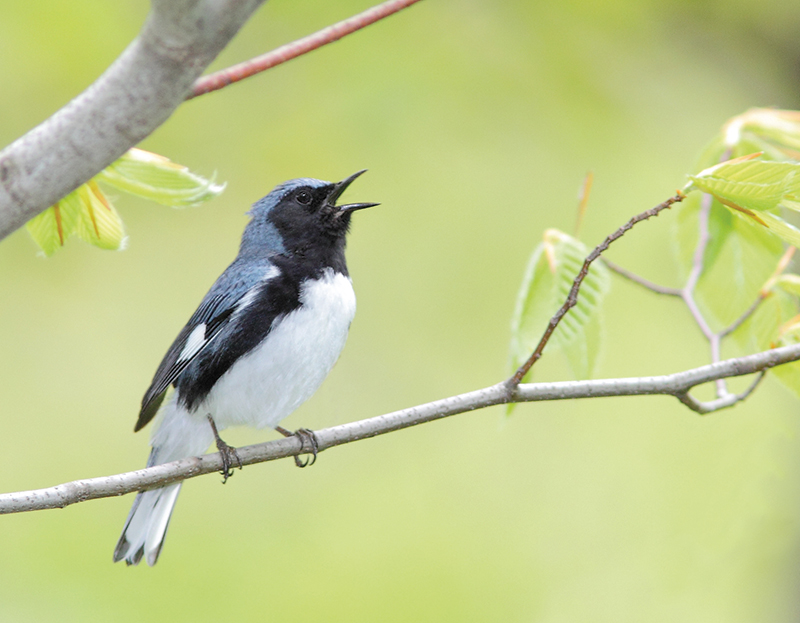Learning Bird Songs

Un texte de Jason Campbell
Paru dans le numéro Printemps/Spring 2024
Publié le : 27 février 2024
Dernière mise à jour : 13 mars 2024
To hear the individual birds singing within the wonderful sounds of spring requires familiarity with bird songs.
Nature is awakening. The birds are singing. It is spring. I get a little buzz of pleasure each time I recognize a bird song that I have not heard in months.
To hear the individual birds singing within the wonderful sounds of spring requires familiarity with bird songs. Learning a few of the most common local bird songs is the key to learning more. This is where I can help. Most bird species have a standard song which they repeat incessantly, especially in the mornings and evenings of May and June. These are primarily males singing to attract a mate and define their territory. Learning the song of one bird species gives you a basis for comparison to learn another. As with a jigsaw puzzle, the more pieces that you connect, the easier it is to get the next one.
We are often alerted to a bird’s presence by a sound – whether it be a song, rustle, scratch or drum. Follow the sound to spot the bird and hopefully you’ll have the opportunity to watch it sing. Take a moment. Think about how the song sounds. Is it melodious, repetitive, whistling, or raspy ? Are the phrases long or short ? Take a good look at the bird itself – its size, shape, and colours. Are there markings on its head ? Is the tail long or short ? These are the clues to identify the species. Next, consult a bird guidebook, an app or bird website to help you match the bird species.
Tricks for retaining bird songs
1. Seeing a bird sing will help cement the song in your memory. Take your time and watch birds sing regularly.
2. Use memory hooks. If a song makes you think of something, make the association in your head. There are also mnemonic phrases used to help retain bird songs. For example, the Chestnut-sided Warbler sings “Please, please, pleased to MEETCHA !” The Black-throated Blue Warbler sings “zee, zee, ZEEEE.” You can make up these phrases or look up other examples.
3. Use repetition. There are bird song CDs, birding apps and websites to help listen to bird songs. Repeat the songs of birds that you are learning.
4. Learn from others. Consider joining a birding hike (www.suttonbirds.com) or a birding group (www.cobm.ca in our area). If you have friends with an interest in birds, ask them to help you.
After some time knowing a bird song you will simply recognize the voice, as you would that of a friend or relative. Sometimes it takes time to place a bird’s song, especially if you have not heard it in a while, but it will come back. Each spring I am delighted to rediscover the sounds that I knew so well the previous summer.
Jason Campbell


